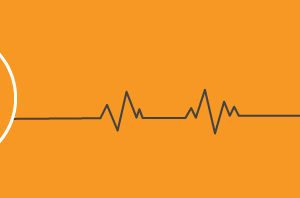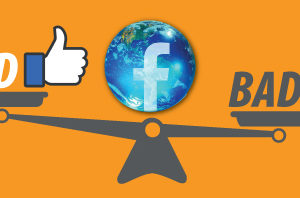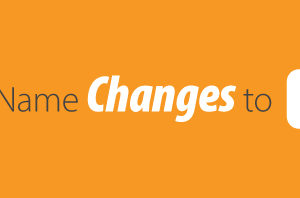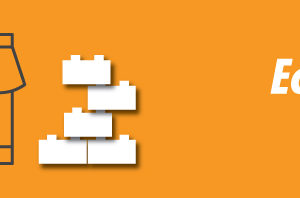
The European Aeronautic Defence and Space Company is now just Airbus Group NV. But what did it take for the simplification of the name, 15 years in the making? In a recent post in the Wall Street Journal titled Airbus’s Long, Strange Trip to a Simpler Name, author Daniel Michaels looked into how the company took its trip to a much more easily recognizable and simple name.
With the new year, the plane maker’s parent company dropped one of the corporate world’s most unaerodynamic names: European Aeronautic Defence & Space Co. It is now rebranded as Airbus Group NV.
The Dutch-registered French-German-British-Spanish multinational’s transformation was 15 years in the making, fraught with the Sturmund Drang of Europe itself.
As a name that only an engineer could love, EADS actually was an attempt to exact revenge on British Aerospace, after it jilted one of Airbus’s founders in an earlier deal, former executives say. As payback, it backfired and instead weighed down the company.
15 Years: How EADS Became Airbus
Inside the company, some managers said EADS sounded like a disease.
The story of the name starts in 1999. Back then, the European Union was flexing its new muscles and its common currency, the euro, was coming to life. The new Eurostar high-speed train line, an engineering marvel, for the first time linked Britain and the Continent. Marketers slapped “Europe” and “euro” on everything that could take it.
Seeking to keep up with American rivals and with European political integration, defense chiefs talked of creating one giant European aerospace and defense company. Policy wonks dubbed their dream the EADC.
It almost happened in 1998, when British Aerospace and the aerospace division of Germany’s DaimlerChysler came within weeks of merging. But at the last minute, the British company ditched DaimlerChrysler and bought a U.K. rival instead, creating a British-U.S. defense company, BAE Systems PLC.
Daimler executives were infuriated by the snub. Then a French playboy swept them away.
Jean-Luc Lagardère was an entrepreneur par excellence. His diverse holding ranged from Elle magazine to Exocet missiles (which had sunk a British Navy destroyer during the Falklands War in 1982). The French government had just entrusted Mr. Lagardère with consolidating the country’s aerospace industry. That done, in early 1999 he approached Daimler about a deal to link French and German companies—uniting factories that had faced off 60 years earlier.
After months of fruitful talks, the issue of the merged company’s name came up over lunch on the Spanish resort island of Mallorca, recalls Jean-Louis Gergorin, who was Mr. Lagardère’s head of strategy. Mr. Lagardère, who died of an acute infection in 2003, said Airbus would be the ideal name for the new company, Mr. Gergorin recalls.
Airbus was an obvious name, since the French and German companies together owned 75% of the plane maker. Airbus had been created in 1970 by aerospace groups in France, Germany, Britain and Spain but worked as a complex consortium rather than a single company. And DaimlerChrysler, which owned the German part, was about to buy the Spanish partner, which owned another 5%.
But in a quintessentially European twist, British Aerospace owned the other 20% of Airbus. The diners in Mallorca knew the valuable Airbus name couldn’t be used without BAE’s consent, which they deemed very unlikely, Mr. Gergorin recalls. And the new company would also make helicopters, rockets and fighter planes.
Instead, DaimlerChrysler executives proposed calling the new company EADC. They wanted to rub in British noses that the vaunted European aerospace and defense company was being created without them, several people familiar with the talks say.
The French negotiators knew they would need British cooperation to help turn Airbus into a real company and so suggested softening the slap by breaking the “aerospace” of EADC into “aeronautics” and “space.” Hence, EADS.
“The very naming of EADS is like a point scored in a lovers’ tiff, a sort of revenge,” wrote former EADS spokesman Pierre Bayle in a blog last year.
The creation of EADS was announced with fanfare in October 1999 in Strasbourg, a city on the French-German border that had traded hands for centuries and is a seat of the European Parliament. Accompanying the overlong name, EADS was born with dual French and German headquarters, chairmen and chief executives. The logo was a fondue of icons from the merged companies.
EADS subsidiaries groaned under the weight of their new parent’s name and geography. In the U.S., Mr. Bayle noted, the logo on a hangar of the company’s helicopter division read: “American Eurocopter—An EADS North America Company.”
In 2006, EADS bought out BAE’s 20% of Airbus. The name—coined before Airbus was created in 1970 because its first plane was going to be a 300-seater designed to bus fliers between Paris and Frankfurt—remained with the EADS unit.
Airbus was now the biggest chunk of EADS and Airbus officials quietly boasted that their division was the true pan-European success story. But when problems arose developing the new Airbus A380 superjumbo jetliner that same year, the Europeans reverted to form and started fighting. French managers blamed German engineers for shoddy work. Everyone else accused the French of chauvinism.
As Europe descended into crisis, EADS became emblematic of the apparently unmanageable marriage.
The unwieldy and unloved EADS name held one advantage, former executives note: It took bad news well. For example, when several top Airbus executives were accused of insider trading in 2006, EADS sought to be quoted in the media to avoid tarring the Airbus name.
EADS and Airbus spent seven years extracting themselves from their mess. EADS streamlined to one chairman and one CEO. Under an unwritten agreement to maintain a Pax Europaea, each position alternated between a French and German executive.
The idea of replacing the EADS name with the Airbus name arose repeatedly over the years, but one conflict or another prevented it. “It was never the right time,” recalls Mr. Ohler.
Last year, the aerospace group’s stars aligned. European politicians had just shot down a proposed merger of EADS and BAE Systems, killing their predecessors’ dream of a true pan-European company. EADS Chief Executive Tom Enders opted instead to scale back on defense, making Airbus an even bigger portion of the company. Lagardère SCA and Daimler AG sold their remaining shares, reducing EADS’s direct ties to France and Germany.
In May the name change becomes legally binding after the company’s annual general meeting. But Europe won’t disappear from the moniker for long. Airbus Group plans next year to change its corporate designation from NV (the Dutch abbreviation for public company) to the SE that is used across the European Union. The designation is short for societas europaea, which is Latin for European company.
What Will Rebranding Do For Airbus Group?
From a company name formed from jumping on the late-90s “euro” Bandwagon to a much more simply named company, the Airbus Rebranding makes for a much more recognizable venture for years to come. It took mergers, moves, and management maneuvers; but Airbus Group is finally has turned its multinational focus into something that will recognize value and its competitiveness in the market.
Airbus Group NV (soon to be SE) is a large rebranding project that brought it recognition even in the consumer spectrum. If you are in need of branding advice or rebranding, IDeas BIG has a history of success working with companies of all sizes and focuses. Check out our portfolios of brand naming, rebranding, and logo design; and if you’re ready to improve your market impact, call Chief Branding Officer Neil Brown for a free consultation.
Do you have any clumsily named brand names that you would like to share? Please comment and share them with us.
Related Links
American Rebranding: A Case Study
1 Comment
Pingbacks
-
[…] Related: EADS Rebrands to Airbus Group […]




